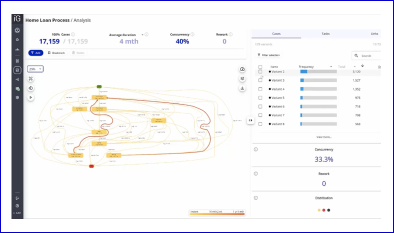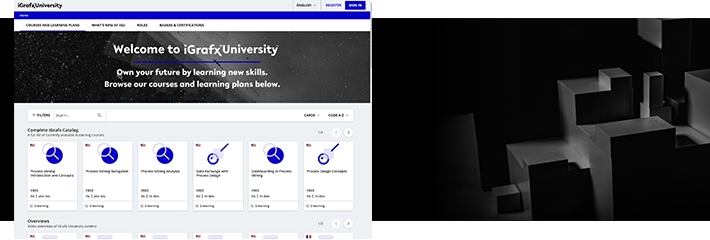Sustainability in action.
Greenwashing or real change? Green issues and sustainable business ideas are now high on the agenda, and not just among the big players. Read why sustainability will be the corporate standard in the not too distant future – and how you can systematically and sustainably anchor the topic in your strategy and business processes in 5 steps.
Whether discounters are removing certain meats from their product ranges, shipping service providers are advertising CO2 neutrality, or consulting giants are turning the corner with corporate social responsibility (CSR) offerings – it is usually hard to tell whether a company has simply thrown on a green cloak to serve a major trend and thus win the favor of a more conscious, sometimes younger target group. Or whether there is a genuine conviction behind it that something urgently needs to change – change from the ground up. The fact is that many countries already set policies of measurable targets.
Today a trend, tomorrow a general corporate standard
One example is the EU Regulation 2020/852 which is based on the Global Goals. It provides criteria for determining when an economic activity is to be classified as ecologically sustainable. On this basis, it is then possible to determine how environmentally sustainable an investment is. Initially, therefore, this will mainly affect the financial sector and debt-intensive industries, but in the medium term it will also have an impact on all other sectors. Especially since the EU Eco-Management and Audit Scheme (EMAS) and ISO 14001 for environmental management have long been established and certifiable standards with the same thrust, to which companies in the health care sector, for example, already have to orient themselves.
In the future, sustainable corporate management will therefore no longer be just a figurehead, but the universal standard – at least in Europe. In the medium term, anyone who wants to make their corporate processes fit for the future will not be able to avoid deeply embedding sustainability in them. This applies to all company sizes and all industries.
Five steps to “sustainable” business process management
Five steps show you the way to continuous sustainability in your company, below are the first two:
1. Check mindset – create a sustainable starting point.
Sustainability as a spontaneous individual initiative in the company – for example as a marketing campaign to boost sales – will be no more than a brief flash in the pan. Apart from that, attentive observers quickly expose such individual campaigns as greenwashing – not excluding flame wars in the social media channels. In order to promote sustainable action within the company and bring real change, management must clearly set the direction and explicitly integrate sustainability into the company’s goals – keyword: management attention. At the same time, it must appoint responsible people who systematically develop and implement a tailored sustainability strategy.
2. Focus and clearly define goals.
Don’t lose sight of the essentials when implementing sustainability goals! As is well known, decarbonization is only one of the many sustainability goals. In addition, it is important to create equal opportunities as well as healthy and fair working conditions – within the company and, in the best case, along the supply chain. The oceans must be protected, the use of resources for production must be examined, waste must be avoided, and so on. Organizations can be burdened if they try to tackle all of their goals at once. And then a sustainability project is quickly shelved. So, before you collect data and develop measures, create clarity. On which sustainability issues does your company have the strongest influence with its business activities? Which are particularly urgent? And: What expectations do your stakeholders have of the company?
The first two steps are already important to make your business processes greener. In the second part of this blog, you will learn the next 3 points that should be considered. This helps ensure your company can remain sustainable in the long term.
Rapid climate change is driving companies to become more environmentally friendly. Sustainability already starts in internal processes and must therefore be rethought. In the first part of our blog we already presented you the first two steps. Here are the next 3 steps for greener business processes.
3. Creating transparency – in one central location.
After this preparatory work, it’s time to start collecting data. The challenge: At many companies, the necessary information is located on isolated solutions with “endemic” types of data. In addition, it is often difficult for non-specialists to assess what data actually goes into the carbon footprint. When a package is delivered it is not just about the route, it’s also about the corresponding fuel consumption. In the background, IT systems are also running on servers (including cooling) that enable customers to track their packages. In addition, the human resources managers of the parcel driver may meet to redesign shift schedules…
A Modern Business Process Management Tool
Thus, to obtain robust data on how much carbon dioxide is emitted, responsible parties need to be interviewed to gain relevant data. A modern Business Process Management (BPM) tool helps to reduce this complexity and make information usable in a central system. iGrafx has already stored all questions of the German Sustainability Index (DNK). At the same time, the BPM software offers companies the flexibility they need to develop their individual sustainability standard based on the prioritized sustainability goals, successively link it to the business processes and underpin it with suitable KPIs. Once set up, the sustainability manager can then, for example, start a workflow at the click of a mouse that automatically collects all the required key figures on the CO2 footprint in a specific process and transfers them in consolidated form to a dashboard.
4. Define and implement measures.
If required, you may also need an audit. You have the key data you need to manage your sustainability goals and implement improvements in a verifiable manner. In addition, you can store possible individual measures in the BPM tool – such as the purchase of CO2 certificates or tree planting. For example, a bank defines the goal of reducing its total CO2 emissions by 10 percent in the current year. The sustainability manager will check all relevant processes for savings opportunities and optimize them accordingly together with the individual departments. Here, too, the BPM software provides the necessary assistance and transparency. For what cannot be saved through process improvements, the sustainability manager will make a selection from alternative measures for compensation.
5. Involve employees – live sustainability.
Organizational basis is established through management guidelines, processes and suitable KPIs. It anchors sustainability in the minds of the employees and shows that small but constant improvements can lead to goals. Experienced consulting partners such as Cofinpro accompany companies and show ways in which sustainability management can be continuously developed. An important factor here is the role model function of upper and middle management. Why should an employee take the train if his superior only drives to his business partners in a company car? If sustainability is exemplified by the top management, it sharpens the eye for optimization potential at the grass roots.
The Future
Then, in the future, the suggestions as to where, for example, printouts can be saved. The processes for granting loans will no longer come from the sustainability manager, but from the relevant clerks. A flexible BPM tool can make a targeted contribution to this awareness. This is because it can make the CO2 consumption of a process comprehensible. It also provides supplementary information: Can working hours be adhered to? Are there alternative decisions – for example, can I create an audit-proof electronic document and dispense with the printout?
Anchoring the understanding deeply in the company that sustainability is not a fad. Instead, it’s the general business standard of the future and an investment in the future. Systematic sustainability management needs to be supported by management. This can result in employees wanting to track down sustainability potential, develop ideas and experiment a little. What experiences have you had on the way to more sustainability in your company? What challenges do you face in this context? Contact us to share your suggestions and questions with us.




